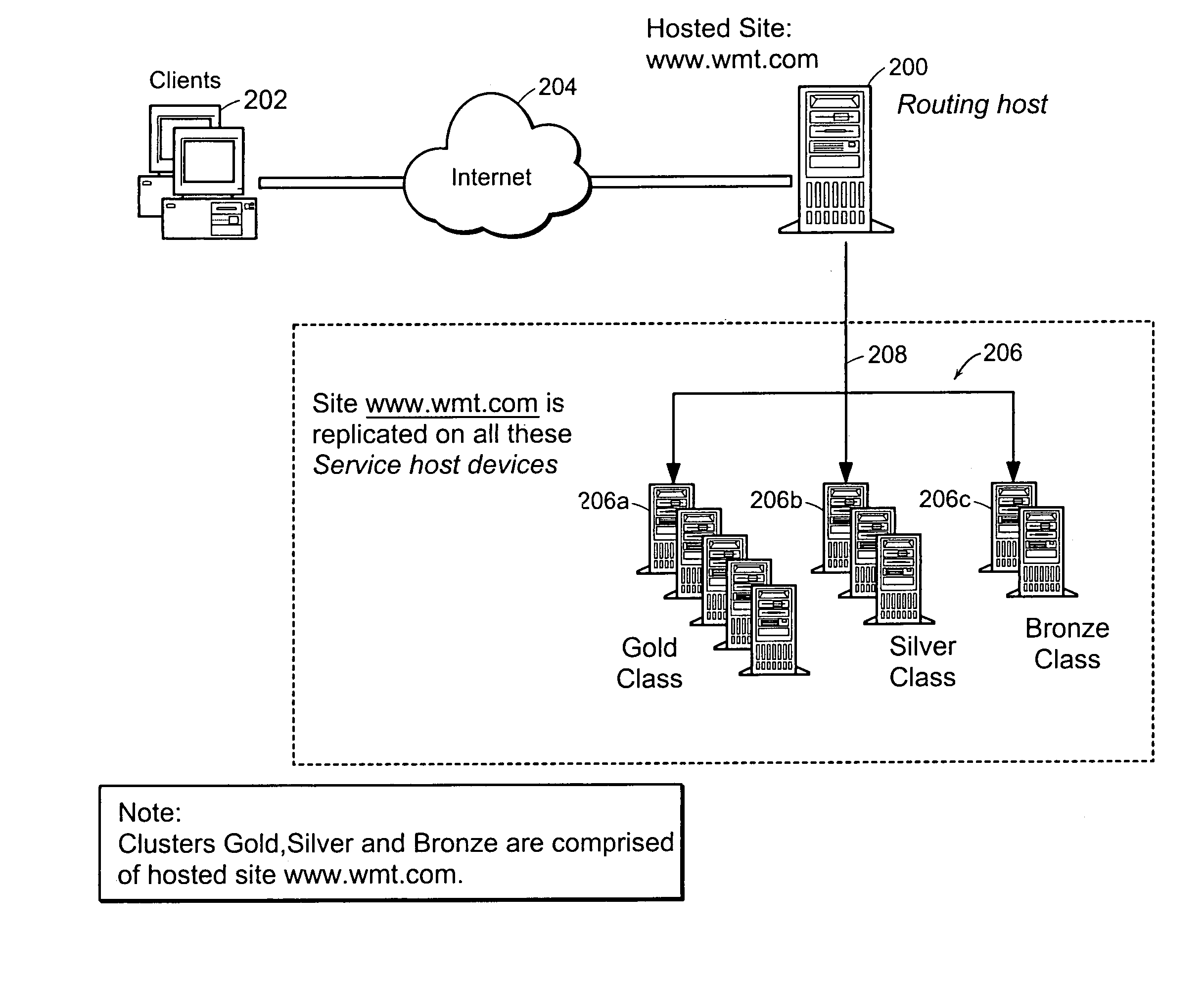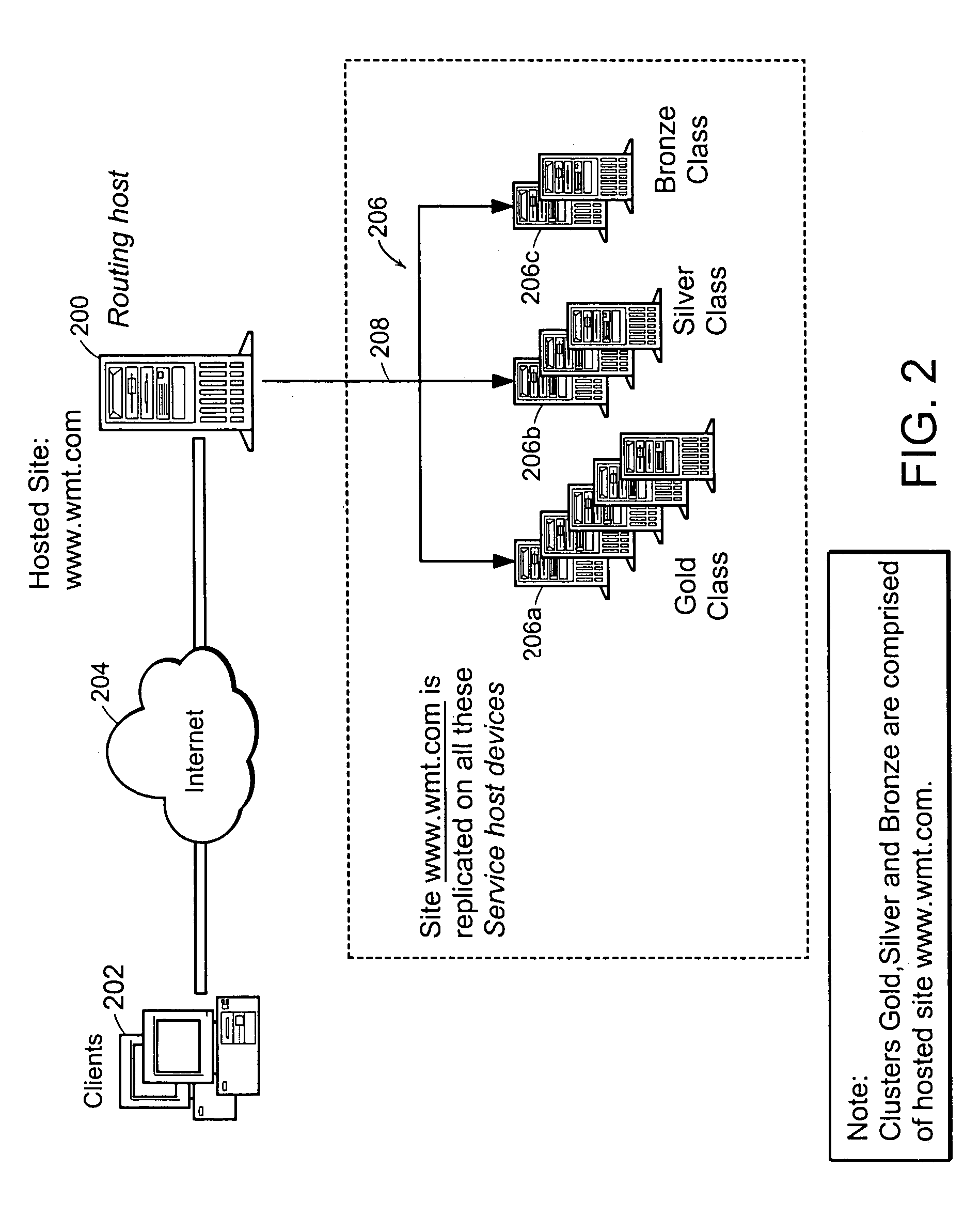Method and apparatus for policy based class service and adaptive service level management within the context of an internet and intranet
a technology of service level management and policy based class, applied in the field of computer networks, can solve the problems of loss of revenue and market leadership, host computers may not be able to service requests in a timely fashion, and clients seeking access to heavily used sites in some cases cannot gain access
- Summary
- Abstract
- Description
- Claims
- Application Information
AI Technical Summary
Benefits of technology
Problems solved by technology
Method used
Image
Examples
Embodiment Construction
[0037]As illustrated in FIG. 2, hosted web sites are distributed among several host computers. One host among these, referred to as the routing host 200, is capable of receiving requests from one or more client devices 202. The request, such as over the Internet 204 in accordance with HTTP, is typically to access content from a hosted site maintained on a back-end server referred to as a service host 206. The routing host (or router) 200 is not capable of servicing requests from client devices 202, rather, it routes the request(s) to service hosts 206 which then service the request and send back response data to the client 202. The routing host 200 in the illustrative embodiment according to the invention reroutes these requests based on policies described hereinafter. The plurality of service hosts 206, in this illustrative implementation, are organized into groups (206a, 206b and 206c) referred to as a cluster. In the illustrative embodiment, the service host devices are each memb...
PUM
 Login to View More
Login to View More Abstract
Description
Claims
Application Information
 Login to View More
Login to View More - R&D
- Intellectual Property
- Life Sciences
- Materials
- Tech Scout
- Unparalleled Data Quality
- Higher Quality Content
- 60% Fewer Hallucinations
Browse by: Latest US Patents, China's latest patents, Technical Efficacy Thesaurus, Application Domain, Technology Topic, Popular Technical Reports.
© 2025 PatSnap. All rights reserved.Legal|Privacy policy|Modern Slavery Act Transparency Statement|Sitemap|About US| Contact US: help@patsnap.com



